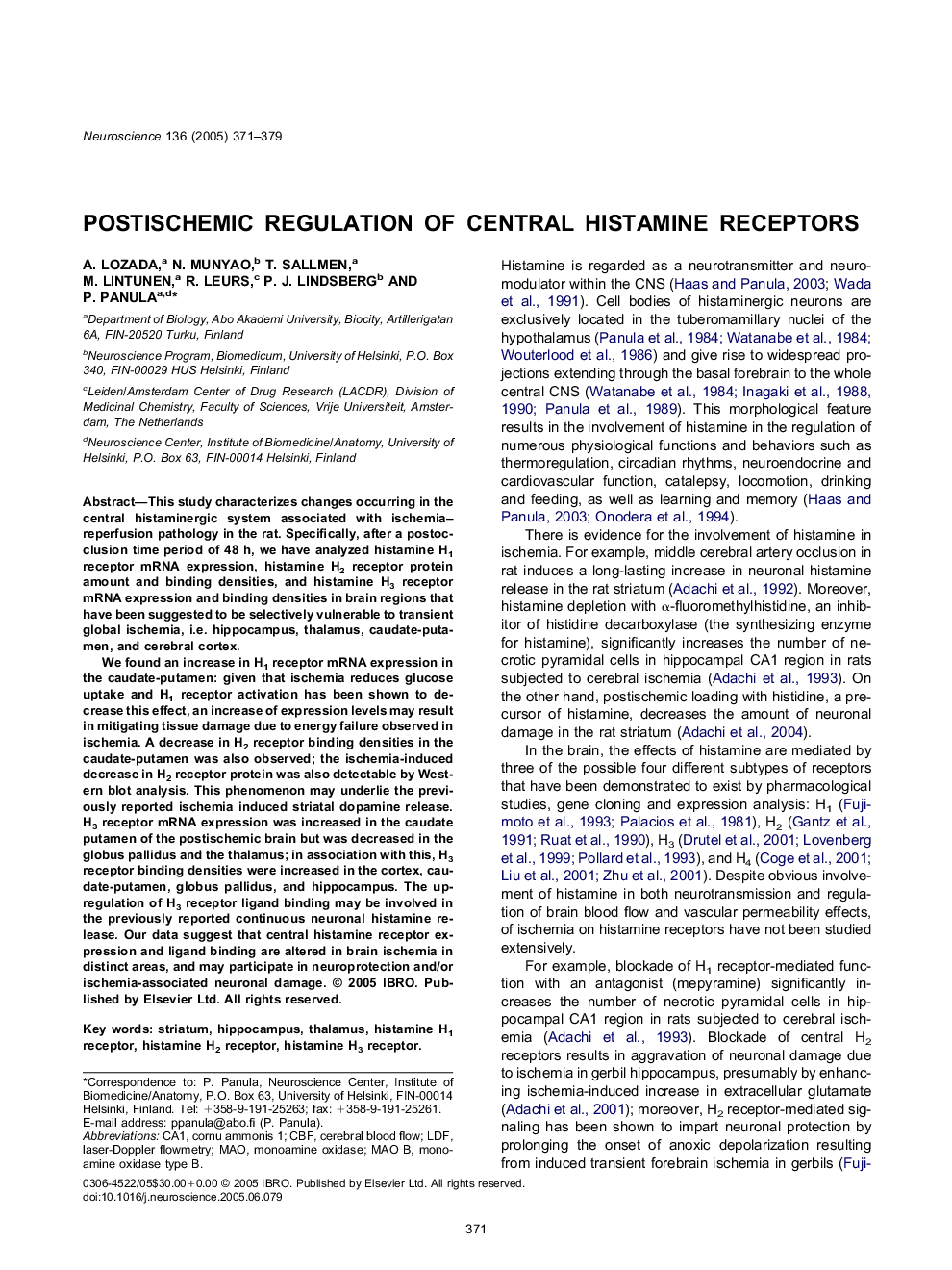| Article ID | Journal | Published Year | Pages | File Type |
|---|---|---|---|---|
| 9426243 | Neuroscience | 2005 | 9 Pages |
Abstract
We found an increase in H1 receptor mRNA expression in the caudate-putamen: given that ischemia reduces glucose uptake and H1 receptor activation has been shown to decrease this effect, an increase of expression levels may result in mitigating tissue damage due to energy failure observed in ischemia. A decrease in H2 receptor binding densities in the caudate-putamen was also observed; the ischemia-induced decrease in H2 receptor protein was also detectable by Western blot analysis. This phenomenon may underlie the previously reported ischemia induced striatal dopamine release. H3 receptor mRNA expression was increased in the caudate putamen of the postischemic brain but was decreased in the globus pallidus and the thalamus; in association with this, H3 receptor binding densities were increased in the cortex, caudate-putamen, globus pallidus, and hippocampus. The upregulation of H3 receptor ligand binding may be involved in the previously reported continuous neuronal histamine release. Our data suggest that central histamine receptor expression and ligand binding are altered in brain ischemia in distinct areas, and may participate in neuroprotection and/or ischemia-associated neuronal damage.
Keywords
Related Topics
Life Sciences
Neuroscience
Neuroscience (General)
Authors
A. Lozada, N. Munyao, T. Sallmen, M. Lintunen, R. Leurs, P.J. Lindsberg, P. Panula,
